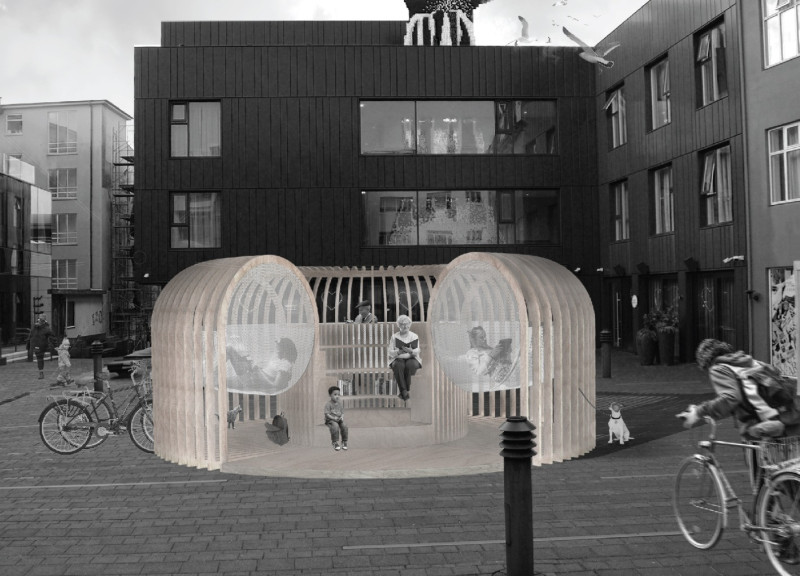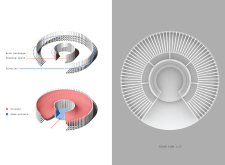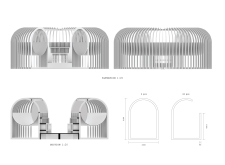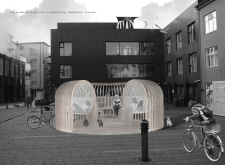5 key facts about this project
The Bookworm is a public reading space designed with community engagement in mind. It offers comfortable seating for readers, a space for book exchange, and a bike rack. Located in an urban environment, the structure presents a welcoming atmosphere that encourages people to read and share stories. The design reflects the gentle act of turning pages, creating a space that invites users to step away from the noise of the city and dive into their reading.
Conceptual Framework
Inspired by the experience of reading, The Bookworm captures the essence of this activity. It emphasizes the connection between users and the literature they explore. The form of the structure promotes a soft presence that encourages visitors to engage their imaginations. This approach enhances the reading experience by providing a haven where individuals can find focus and tranquility.
Spatial Organization
The interior layout is carefully planned to support access and comfort. Users can enter the space from different points, ensuring smooth movement without disturbing others. Hammocks are positioned throughout, offering cozy spots for reading. This arrangement promotes a sense of privacy in a shared environment, allowing everyone to find their favorite nook while still being part of the community.
Materials and Functionality
Plywood serves as the primary material, chosen for its durability and ease of use. The shelves, constructed with plexiglass, showcase the book collection while providing safety and organization. These shelves also function as benches for seating, making the space adaptable. Steps leading to the hammocks are designed with practicality in mind, promoting ease of access for all visitors.
Design Details
Upon entering, users encounter shelves filled with books in the center of the structure. The thoughtful design facilitates interaction with the collection while creating a warm and inviting atmosphere. Natural light highlights the books, enhancing the overall experience. The combination of functional elements and attention to comfort makes The Bookworm a significant addition to any urban landscape, fostering a deeper connection to reading and literature.






















































